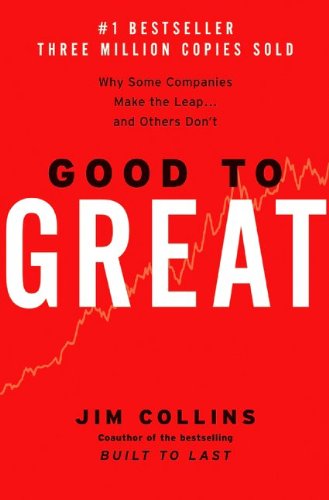
From "Good to Great: Why Some Companies Make the Leap... and Others Don't"
The Stockdale Paradox: Unwavering Faith Amidst Brutal Facts
Key Economic Insight
The 'Stockdale Paradox' describes a powerful psychological duality observed in all 'good-to-great' companies and individuals facing extreme adversity: they stoically accept the 'brutal facts' of their current reality while simultaneously maintaining 'unwavering faith in the endgame' and a commitment to prevail. This principle applies to companies like Fannie Mae, which in the early 1980s faced a 56 billion dollar loan portfolio losing money due to high interest rates and was chartered not to diversify. Despite derision from analysts, CEO David Maxwell and his team never wavered in their faith to prevail as a great company, not just survive, by inventing sophisticated mortgage finance instruments and becoming the best capital markets player at managing mortgage interest risk, leading to nearly eight times the market's stock returns over fifteen years.
Admiral Jim Stockdale, a US military officer held for eight years in the 'Hanoi Hilton' POW camp, exemplified this paradox. Despite enduring over twenty torture sessions without certainty of release, he never lost faith that he would 'prevail in the end' and turn the experience into a defining event. Stockdale noted that 'the optimists' — those who constantly set specific release dates like 'Christmas' or 'Easter' — were the ones who 'died of a broken heart' when those hopes were unmet. He emphasized the crucial distinction: 'You must never confuse faith that you will prevail in the end — which you can never afford to lose — with the discipline to confront the most brutal facts of your current reality, whatever they might be.'
The Stockdale Paradox proved to be a signature characteristic across all 'good-to-great' companies in the research, even if they did not face crises as dire as Stockdale's. Examples include Kroger vs. A&P, Wells Fargo vs. Bank of America facing deregulation, Kimberly-Clark vs. Scott Paper confronting Procter & Gamble's might (where Kimberly-Clark, exhilarated by the challenge, even held a 'moment of silence for P&G'), Pitney Bowes vs. Addressograph, and Nucor vs. Bethlehem Steel. These companies maintained unwavering faith in their ultimate success while being 'relentlessly disciplined' in confronting brutal facts. This deceptively simple duality enabled leaders to cut through 'noise and clutter', make a series of good decisions, and achieve sustained breakthroughs by operating from both sides of the paradox.
📚 Continue Your Economic Learning Journey
Access the complete Good to Great: Why Some Companies Make the Leap... and Others Don't summary with audio narration, key takeaways, and actionable insights from Jim Collins.